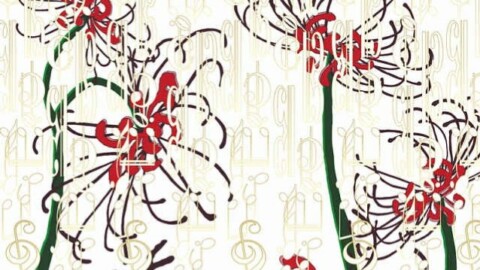
You know how it is. One minute you’re carefully sneaking up on Santa, ready to prise some super hi-tops from his jolly mitts, when all of a sudden a phantom ice cream truck announces its arrival with an almighty honk. You scramble to check for presents that might help but, having already randomized twice, you’re as likely to unleash a torrent of tomato rain as a life-saving boombox.
If none of this is filling you with nostalgia, perhaps you missed out on the gonzo pleasures of ToeJam & Earl, this year celebrating the 30th anniversary of its release on the Sega Megadrive. A sleeper hit by all accounts, the game went on to become a resounding cult classic that spawned a string of sequels, each one an ambitious attempt at replicating the original’s charm.
The 1991 game follows the story of two rap-loving aliens who crash-land on earth and begin trying to piece together their spaceship – only to find an assortment of pesky earthlings in their way. With the aid of various gift-wrapped presents that can hinder as well as help the protagonists, they attempt to escape our ridiculous planet and return to their own.
Falling in love is one of the many pitfalls that the pair must face on their journey, and it was one that I succumbed to instantly as a giddy six-year-old. Offering a simultaneously co-operative two-player mode – a gaming dynamic that was almost non-existent at the time – as well as the ability to play randomly generated levels every time, ToeJam & Earl was both outrageously fun and highly replayable.
Back in 1991, of course, I wasn’t to know that I’d one day be interviewing the game’s creator, Greg Johnson, via a Zoom link to his home in Hawaii for NME. As he tells it, Johnson’s idea for ToeJam & Earl began in rather picturesque style, relaying the game’s unusual premise to programmer Mark Voorsanger during a trek up California’s Mount Tamalpais in 1989.
“I pitched him on this crazy idea of these two aliens that crash land on earth, how we’d flip things upside down and the earthlings are the bad guys that are chasing the aliens,” Johnson explains. Voorsanger loved it, and – somewhat to the pair’s surprise – so did Sega. At the time the company was desperate for colourful, on-brand mascots to rival Nintendo, and for a while, it looked like the duo from Funkotron might fit the bill.
“There was quite a while where the folks at Sega of America were very excited about our title, and they were saying, ‘Hey, we think these could be our Mario characters. These could be our mascots,’” Johnson says. “And we’d kind of gotten our hopes up that they could be right I suppose.” It wasn’t to be: about halfway through development, a certain blue hedgehog raced onto the scene and filled those boots quite spectacularly.
Nonetheless, the company knew they had something unique on their hands. Not only was ToeJam & Earl visually and stylistically incomparable to anything else on the market at the time, it also sounded incredible, blending extravagant synth-based funk and rap beats that somehow felt perfectly at home on a 16-bit sound card.
It wasn’t entirely accidental. Growing up in Los Angeles as the child of a Russian mother and an African-American father, Johnson was already smitten with the music of the era when he graduated high school in 1977: Herbie Hancock, Dazz Band, Parliament. “Everybody was listening to that music, playing ‘Low Rider’ with boomboxes on their shoulders and stuff like that,” he recalls. “So that was kind of my world growing up, and it’s what I loved.”
Roping in composer John Baker and audio engineer Mark Miller, the team set about creating one of the most memorable video game soundtracks of its era. The music in ToeJam & Earl, written and recorded at the turn of the decade, tied in perfectly with the title sequence’s neon hues and squiggly lines to forge something utterly of its era: a Fresh Prince Of Bel-Air aesthetic that brought cartoon hip hop into bedrooms across the world.
One of those bedrooms, it turns out, belonged to a young Macaulay Culkin. After the Home Alone star tweeted in 2018 to let the world know what he was doing instead of watching the 90th Academy Awards ceremony, Johnson was surprised to be informed that one of Culkin’s preferred activities for the evening was playing ToeJam & Earl.
Here's some things I'm doing instead of watching the #oscars
5. Toejam & Earl pic.twitter.com/w2jWutHw83
— Macaulay Culkin (@IncredibleCulk) March 5, 2018
Johnson immediately reached out to the former child actor, not really expecting to hear back. But before long the pair were in touch, and Culkin was flying out from LA with his brother and their friend Stu. “We spent three days together playing both of the old games,” Johnson recalls. “We even played the handmade ToeJam & Earl board game which I had made back in the ‘90s.”
At the time of Culkin’s arrival, a third ToeJam & Earl sequel was in the works at that time, following two decidedly hit-and-miss follow-ups to the original, both of which had been plagued by interference from marketing teams who were anxious to steer the franchise on trend. 1993’s ToeJam & Earl in Panic On Funkotron, for example, was already well underway when the suits stepped in to demand a more fashionable side-scrolling platformer.
After years in relative wilderness, ToeJam & Earl III: Mission To Earth met with a similar fate, already somewhat compromised by mid-production interference by the time it arrived for Xbox in 2002. “I wish I had stood my ground a little bit more,” Johnson admits now. “But you know, when a publisher says, ‘You’re not paying the bills, it’s our money at risk and this is what we think the market wants,’ you think, okay, that’s a good point. It’s not my money at risk, and maybe you guys do know what’s best.”
So in 2018, Culkin asked what he could do to help the next project. The group had just played a demo version of a new title that Johnson’s HumaNature Studios had been working on, and this time the mission was clear: the game would be crowdfunded by Kickstarter and – crucially – it would finally be the one to recapture the spirit of the 1991 original.
Johnson promptly made Culkin an executive producer on what would go on to become ToeJam & Earl: Back In The Groove, even adding in an unlockable “bunny ears” feature that allows players to hit each other with tomatoes, as Culkin apparently used to do with his brother as a kid. Despite some initially lukewarm reviews, a subsequent update has made the game into what fans had been craving the best part of three decades: a true remodelling of a classic.
Where it succeeded most admirably was regaining the game’s beautiful weirdness. It’s important to recognise that ToeJam & Earl represented something of a watershed moment in both character design and gameplay, offering a pair of lead characters that were equal parts witty and clueless in a way that early ’90s slacker culture simply hadn’t seen outside of TV shows like The Ren & Stimpy Show or, later, Beavis and Butt-Head.
Both characters were also identifiably Black-coded in a world of white earthlings – as well as being, quite literally, aliens – a trope that was mirrored in the deeply white world of video game design at the time. Cultural diversity is something Johnson remains passionate about: “It’s something I’ve felt is missing in the gaming world,” he tells me.
“That’s why my studio is called HumaNature Studios – it’s like, where is the humanity, you know? Where are all of the people you see in movies and books, the real people, the real cultures? It’s all very generic.” With ToeJam & Earl, gamers were presented with a pair of outsiders in every sense; when Johnson talks about growing up as a biracial gaming nerd with a comb in his hair, it’s hard not to feel that some of his own character slipped into the coding.
Beyond that, its groundbreaking qualities as a fundamentally co-operative game meant that, for the first time on a major console, players were working together at the same time. ToeJam & Earl is a game that rewards altruism and communal thinking. Its relative slow pace means that it is also, after a fashion, an ambient game. Long before open-world adventures soared to the heights of titles like Breath Of The Wild, it felt like a universe you could explore at more or less your own pace.
Perhaps that’s why, when the first COVID-19 lockdown arrived, it ended up becoming an unlikely mental health lifeline for me and my family – specifically my mother, who still adores the game. We kept each other sane by playing individual games of ToeJam & Earl across video calls when we could no longer see each other face-to-face. Shut away from an outside world that had become increasingly hostile and uncontrollable, it was a tiny, miraculous source of comfort.
Relaying my story to Johnson, there’s no doubt he’s thrilled by the nostalgic rush that the game still produces. But he also talks excitedly about future projects – a Hollywood film and a TV series are both in the works, he says, though he can’t reveal too much about that just yet. He’s also working on a new project with E-Line Media, and waxes lyrical about his unerring passion for what he believes video games can achieve.
“I’m excited to meet people in the industry who are on a similar mission to me, and wanting to share cultural games – both outward-facing, so that a culture can share their culture with the rest of the world, but also inward-facing so that a culture can share it with their own youth and instill pride in their culture,” he says.
“That way they have a way to connect and cross that boundary between what’s often a very traditional culture and the modern world, which can be very disorienting for young people. A video game can be a wonderful bridge for that.”
ToeJam & Earl formed bridges to worlds I could never have imagined – sometimes by Icarus wings, sometimes by rocket skates, often by reconnecting with childhood joys that bled unexpectedly into an anxious present. For a quirky game about eluding the world’s boogiemen and returning home at last, its legacy deserves to be cemented for generations to come.
Matthew Neale is a freelance writer and frequent contributor to NME. Toejam and Earl is playable now, providing you can find a Mega Drive.
The post ‘ToeJam & Earl’ taught us about aliens, hip-hop – and what it means to find home again appeared first on NME.






